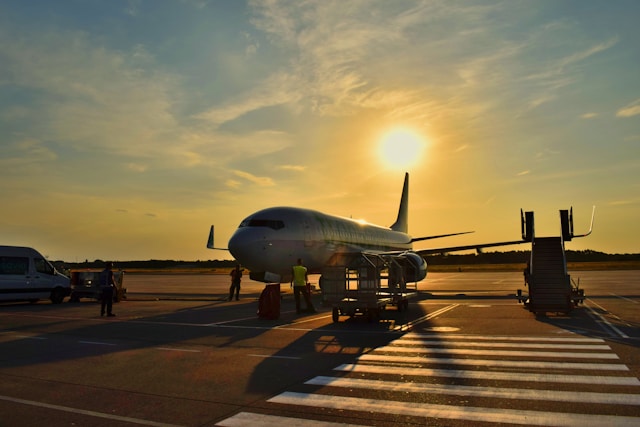A dramatic surge in false bomb threats is causing significant delays and diversions, raising alarm among airlines and travellers in India’s booming aviation sector
A troubling rise in hoax bomb threats is wreaking havoc on air travel in India, disrupting flight schedules and causing widespread anxiety among passengers. The Indian aviation sector, which is one of the fastest-growing in the world, is grappling with an unprecedented wave of these false threats that have diverted planes and left countless passengers stranded.
On 15 October, an Air India Boeing 777, originally flying from Mumbai to Chicago, was diverted to the remote Canadian city of Iqaluit due to a bomb threat. The 211 passengers aboard faced a bewildering ordeal as they disembarked into the frigid air and were left waiting at the airport for hours. Harit Sachdeva, one of the passengers, expressed frustration on social media, sharing that they were “completely stranded” and lamenting the lack of communication from Air India. Fortunately, their plight was alleviated when a Canadian Air Force plane ultimately transported them to Chicago.
This incident is just one of many in a year that has seen a staggering increase in hoax threats aimed at Indian airlines. In the week leading up to the Air India diversion alone, authorities reported at least 90 similar threats, resulting in a cascade of flight cancellations and delays. The scale of the disruption is highlighted by a single day in June when 41 airports received bomb threats via email, necessitating enhanced security measures.
Embed from Getty ImagesIndian federal aviation minister Kinjarapu Ram Mohan Naidu has publicly condemned these “mischievous and unlawful actions,” stressing the impact on safety and operational integrity within the aviation sector. “I am deeply concerned over the recent disruptive acts targeting Indian airlines,” he stated, as the government grapples with the chaos brought about by these hoaxes.
So, what is driving this surge in bomb threats? Experts point to a mix of motives that may include malicious intent, attention-seeking behaviour, mental health issues, or even simple pranks. In one notorious case last year, a frustrated passenger called in a bomb threat to delay a SpiceJet flight after missing his check-in. The increase in threats comes at a time when more than 150 million passengers flew domestically in India last year, underscoring the vulnerability of a sector that sees over 3,000 flights daily from more than 150 operational airports, including 33 international airports.
As hoaxes peak, India recorded its highest passenger traffic on 14 October, with a remarkable 484,263 individuals taking to the skies in a single day. However, the concurrent rise in bomb threats presents a major obstacle to growth in the aviation sector, which boasts an order backlog of over 1,700 planes. Rob Morris of Cirium, a consultancy, describes India as “the fastest growing commercial aircraft market today.”
The implications of a bomb threat are significant. When an aircraft is in flight, it must divert to the nearest airport, as seen in the aforementioned cases involving Air India and Vistara flights diverted due to similar threats. Once on the ground, the procedures necessitate thorough searches of all passengers, baggage, and cargo. These protocols can lead to hours of delays, often requiring replacement crew members due to duty hour limitations, which compounds the disruption.
Independent aviation expert Sidharath Kapur explains, “Every diverted or delayed flight incurs substantial expenses, as grounded aircraft become money-losing assets.” This cascading effect can disrupt the entire airline network, leading to more cancellations and scheduling chaos.
The anonymity of social media threats has made it difficult for authorities to identify the perpetrators. Investigators have traced some threats to London and Germany, but the motivations behind them remain elusive. Last week, Indian authorities apprehended a 17-year-old school dropout accused of issuing bomb threats via a social media account, resulting in multiple flight disruptions.
While Indian law prescribes life imprisonment for threats to airport safety, this harsh penalty is likely impractical for hoax calls. Consequently, the government is considering new legislation that could impose a five-year prison term for such offences and potentially place offenders on a no-fly list.
The anxiety generated by these hoax threats is palpable among passengers. One aviation consultant recounted how a family member expressed concern about flying in light of the recent threats, asking whether she should consider taking a train instead. “I told her, ‘Please continue to fly,’” he said, highlighting the distress caused by the climate of fear surrounding air travel.
As India’s aviation market continues to grow, the challenge of addressing these hoax bomb threats remains paramount. The disruptions caused by these malicious acts threaten not only the integrity of air travel but also the confidence of passengers who rely on airlines for safe and efficient transport.
